Thanks to a very generous benefactor, we are taking PlotWriMo: Revise Your Novel in a Month on what appears to be developing into a massive blog tour beginning December 1st through the 5th!
Seven years ago, I began offering the beta version of
PlotWriMo for novelist word drunk from
NaNoWriMo. Over the years I continued refining and perfecting the steps to help writers revise all those words generated in November into a compelling story with a plot (and all other novelists and memoirists and screenwriters alike struggling to create a pleasing form for their readers)
Earlier this year, I partnered with
Jill Corcoran who brought her insight and love of concept and knowledge of the inside of publishing. Together we created an entire video series of the program. The feedback and "ah ha" moments we have received have been enormously rewarding and makes all the time and hard work worthwhile.
Sample of feedback:
"Jill (video 4, I think) explained what agents meant when they say "They didn't connect" and it was like a lightbulb had been screwed in my head-- I failed to meet all of the essential elements of a scene. There was always something about my former MS that I could never pinpoint that felt off, and that was just it! I needed more emotional development, conflict/ tension, dramatic action and clear goals PER scene."
"I watched the Revise Your Novel in a Month videos and really began to understand the difference between crisis and climax and the key ways to develop each part of the plot."
"PlotWriMo is the closest “formula” for structuring a book I’ve ever discovered. It’s like an algebra equation for writing – if you’re missing any of the energetic markers you can’s solve for X."
"It’s helped me re-envision my own work and I can’t stop myself from dissecting every movie and book I’ve read since."
"I've learned a lot through the PlotWriMo series. I've always struggled with revision, but the PlotWriMo series has helped me organize my revision so that I am going deeper than I ever have before at making my story shine."
"Now, what did I learn from the videos? Goodness, what did I not? It's all about the structure. Being a pantser doesn't work when you are revising (Not sure it would work for me - ever), but you have to be clear in your journey. I also learned to forgive myself. To keep writing. And that we can learn from our mistakes and become better writers."
"I watched PlotWriMo and learned about EMs, concept and that the antagonist OWNS the middle."
“Ah, ha” Moment: The exercise of writing down all of the themes, and getting down to the grittier ones. And when I found my darker theme was about loss, and the threat of losing someone you love. I couldn’t believe when I went back and looked at the Energy Markers and found that common theme. I’m working on deepening the scenes with metaphors and thematic significance."
"Don't start drafting until you're happy with the concept and markers."
"As for what I learned, viewing both the crisis and the climax from my antagonist’s point of view gave my story dramatic action and the depth it needed to bind the story and pull in the reader."
"Yet my greatest aha moment came with the challenge of writing the concept, giving my story definition. As a young woman I took my family on some exciting adventures, wounds and all, and the only dream still intact in the end was my passion and desire to be a writer. I couldn’t just throw out my concept because it wasn’t good enough, or my life wouldn’t be either. Crafting my concept, meant validating what I had done and why, all the parts and pieces."
"I really had an "aha moment" when Martha Alderson talked about the end mirroring the beginning."
The icing on the proverbial cake was the news that one writer secured an agent (having the amazing opportunity to chose from 3 offering her contracts). As she writes: "No word of lie - it is absolutely thanks to Jill Corcoran and Martha Alderson! The last round of revisions changed everything! I just thank god I have the videos and future classes for other books! I have worked like a dog on this book, but the videos and Martha's book really changes everything. The advanced workshop kicked my butt in the best way possible and made me really rethink some things and made the work so much better!"
The tour begins December 1st through the 5th so if you'd like to add your blog to the tour, please
sign up ASAP. We're using the opportunity to spread the word about writing and revising stories and about A Path to Publishing in general. Jill and I will visit all the participating blogs, comment and award prizes. (If you'd like to simply follow along on the tour, I'll list the participating blogs during the tour.)
See you soon!
For help about the Energetic Markers to write toward every week of
NaNoWriMo.
The Plot Whisperer Workbook: Step-by-step Exercises to Help You Create Compelling StoriesFor plot prompts to move your writing everyday and reach each major turning point:
The Plot Whisperer Book of Writing Prompts: Easy Exercises to Get You Writing. To complete write your story in a month, complete 4 prompts everyday. (As one writer proclaims: The PW Book of Prompts is my lighted path…)
For plot help and resources during NaNoWriMo
:
1) The Plot Whisperer Workbook: Step-by-step Exercises to Help You Create Compelling Stories2) The Plot Whisperer: Secrets of Story Structure Any Writer Can Master3) The Plot Whisperer Book of Writing Prompts: Easy Exercises to Get You Writing. ~~~~~~~~To continue writing and revising (and, lots of writers are finding PlotWriMo the exact right resource to help pre-plot for a powerful first draft. Knowing what to look for in a revision helps create a tighter first draft):-
- PlotWriMo: Revise Your Novel in a Month
~~
View your story in an entirely new light. Recharge your energy and enthusiasm for your writing. 8 videos (5.5 hours)+ 30 exercises
Now available!
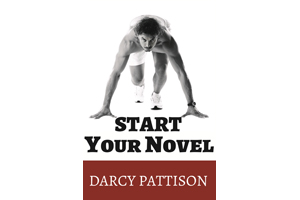
guest post by Anne Broyles
Anne attended a novel revision retreat a couple years ago. Switching from novels to picture books, she applied all the principles of great writing and the result is an amazing story. Here, she talks about her revision process. –Darcy
Arturo and the Navidad Birds
With the publication of my third picture book, I took the chance to reflect on the thirteen-year period that brought Arturo and the Navidad Birds to bookstores. If I’d known ‘way back then what I have learned over these years, the book might have been published earlier but I apparently needed time to learn these lessons!
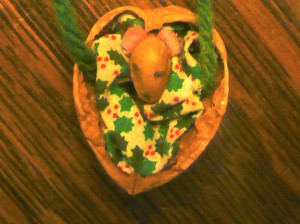
Mouse Ornament
- 1/2001: On breaks from other projects, I mulled over the grandmother and grandson. Who were they and what sort of relationship did they have? Having recently studied Spanish in Costa Rica, I decided to root my story in a family with a Costa Rican-born grandmother and American-born grandson.
- 2/2001: I spent way too much time figuring out a chronology of the grandmother’s life. How much time did I spend on Arturo’s character? Not enough!
- 7/2001: I wrote the first draft (2000 words in 3 hours) in English with occasional Spanish words, and compiled a list of possible publishers. The story belonged to Abue Rosa, focusing on her back-story and the ornaments’ history. Arturo was not fully developed in this wordy draft.
- 9/2001: An editor friend gave her opinion on the first draft (“the idea holds a lot of appeal”) but wondered about the chronology of Abue Rosa’s too-complicated back-story. I realized I needed to get into Arturo’s head more. Around this time, I also asked a Costa Rican colleague for comments on language/cultural accuracy and made some small changes. I also asked several Hispanic friends what they called their grandmothers and discovered a great variety as each family chose its own nicknames (English-speaking North American families may call grandmothers Grammy, Nonna, Memaw, Granny Sue, Oma, etc.)
- 2003: I sent The Memory Tree to POCKETS magazine. Rejection #1.
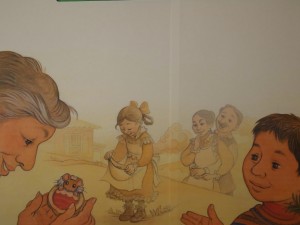
- 2004-2009: Although this wasn’t my main work-in-progress, I did share the story with my two critique groups and a writing revision retreat. With their feedback, I realized that I had a “talking heads” story that was too “quiet.” The numerous ornament stories slowed down the action so I deleted all but a few decorations. The word count decreased, little by little, from 2000 to 933 words.
One colleague commented that her son would never be so calm, but would find ways to play with ornaments. Her words helped me unlock Arturo’s character— he finally came to life as I added the broken bird ornament to give the story tension and meaning. Up until then it had been “Abue Rosa and Arturo decorate the tree together. Isn’t that sweet?” Now, the story had action/reaction, conflict and resolution.
One reader disliked The Memory Tree title, which “sounded like a genealogical tree.” I liked her suggestion and changed to “The Empty Christmas Tree”.
In 2008, I sent the manuscript to two editors. One mentioned “a sweet plot”, the other “liked the Costa Rican references and cultural context” but “the initial string of remembrances isn’t enough to pull me into the story.” Rejections #2 and 3.
- Between 2009 and 2011. I tightened the story to 738 words and sent the manuscript to six more editors for rejections #4 and 5, three no response even with follow-up, and in 2/2010: Pelican’s Nina Kooij said they would hold the submission on their “possibles list,” but I was free to submit elsewhere.
- 2010-2011: Eleven years had passed since my initial idea. Was this bilingual, multicultural, holiday book fit too narrowly defined? I put away “The Empty Christmas Tree” and worked on other projects.
- 1/12: I almost didn’t open my SASE from Pelican since it had been two years since I last heard from them. Nina Kooij asked if the book was still available. Yes, yes, yes!
- 3/12: Pelican requested a new title “that implies the Hispanic culture.” I compiled a list of 22 titles (my own and friends’ suggestions) and tweaked the manuscript, making small changes that better reflected Hispanic culture. They chose Arturo and the Navidad Birds, which I like because it shows the protagonist, his family’s cultural and language background, and the symbols of the problem Arturo must solve.
- 5/12: Pelican decided to publish Arturo and the Navidad Birds with my English-with-a-smattering-of Spanish text and a separate all-Spanish text. I cut 100 words to make room for the Spanish text.
- 7/12: Once I had a complete Spanish translation, I emailed numerous Spanish-speaking friends and professional resources for their opinions. Their responses (we would say this instead of that; we don’t use this phrase in our country) convinced me to make the setting more generically Central American or Mexican. I altered some words/phrases to fit this vision.
- 9/12: I signed a contract with Pelican.
- 9/2012-3/2012: I worked with my editor and the illustrator to coordinate text and art. KE Lewis’ lovely paintings brought depth to my words, and I especially love how she showed Abue Rosa’s memories in sepia with the contemporary story in brighter colors. There are lots of details for young readers to discover in the book’s pages, and I was reminded of how important is the illustrator’s contribution to a picture book.
- 9/2013: Pelican released Arturo and the Navidad Birds.
 In hindsight, I realize that my initial idea was more setting than plot. Until I knew both Arturo and Abue Rosa, the manuscript was an exercise in getting to know my characters and making the setting real in my mind. Once I identified a clear problem and brainstormed ways Arturo could try to solve the problem, the story worked. I cut two-thirds of the length, tightened the plot, layered more of Abue Rosa’s culture into the story and built the story’s tension up to Abue Rosa’s statement: “People are more important than things.”
In hindsight, I realize that my initial idea was more setting than plot. Until I knew both Arturo and Abue Rosa, the manuscript was an exercise in getting to know my characters and making the setting real in my mind. Once I identified a clear problem and brainstormed ways Arturo could try to solve the problem, the story worked. I cut two-thirds of the length, tightened the plot, layered more of Abue Rosa’s culture into the story and built the story’s tension up to Abue Rosa’s statement: “People are more important than things.”
And it only took me thirteen years to get these 32 pages right!
–
 Anne Broyles
Anne Broyles
Bio: Anne is the author of ARTURO AND THE NAVIDAD BIRDS, PRISCILLA AND THE HOLLYHOCKS (Notable Social Studies Trade Book for Young People, Bank Street College’s The Best Children’s Books of the Year, and Massachusetts Book Awards recommended reading list) and SHY MAMA’S HALLOWEEN (Notable Social Studies Trade Book for Young People, Teacher’s Choice Award and the McNaughton Award). She lives north of Boston with her husband, two cats
and an old black dog named Thor. For more, see

I recently did a revision of a short novel manuscript, based on editorial Notes. The Notes were not specific, rather quite general. You see stories of 15-page editorial letters, but this was the total opposite. Basically, the story seemed out of focus and the interest lagged at a couple points.
Refocus the Story

Wow. What a vague comment. But immediately I knew what the problem was.
My story has a main plot — Parties– and two subplots, Bugs and Music. In the original draft. Chapter one focused on Parties/Bugs, but chapter two went to Music/Bugs.
What is the main plot? Parties.
But when chapter two went to Music/Bugs, it threw the main plot out of focus. Instead, I moved the Music/Bugs to chapter three and pulled a later Parties chapter up to the chapter two position. Of course, that meant smoothing out transitions and timelines, something easy to do; it was also easy to get wrong, because it was tiny things that indicated the timelines. “Later that day. . .” “. . .from yesterday.” I am very bad at finding all of these small edits and am relying on some critiques to make sure I didn’t miss something.
Besides the position of the subplots, I also realized that one subplot had too many scenes. In the short novel that I’m working on, I didn’t have much room for each subplot, so when Bugs got four pretty major scenes, it threw off the focus again. After evaluating the four scenes, I realized that one was slightly repetitious and I could cut it without affecting the overall story. That strengthened the Bug climax because the two lead-up scenes were enough and it left this remaining scene more fresh and fun.
Finally the Notes suggested that the climax of the main Parties plot was too short. Duh. It was only half a chapter. In the revision, it begins in the next-to-last chapter, and continues through most of the last chapter. Making the climax of the main plot longer, gives it more weight.
Overall, here’s what I did:
- Cut a Bugs scene.
- Rearranged the order of Parties plot, Bugs subplot, and Music subplot.
- Strengthened the Parties main plot by enlarging the final Party scene.
- Created more tension throughout by tweaking the emotional impacts of events.
All of that because the Notes said the story was out of focus and the final Party scene needed to be longer. It’s what we do: we revise.

Endings or beginnings? Which are more important? Neither. They are both crucial.
Connection between the Beginning and the Ending
The first thing to notice is that these two points in a narrative must be intimately connected. The story problem you set up must be the same story problem that you solve. When you’re revising a novel, you must check these two point to decide if you went off track somewhere.
If the main story problem is peace in a family that is fighting, the ending can’t be that the family goes off on vacation together. The reader doesn’t know if the family will fight during that vacation or not. They might indeed go off on vacation, as the denouement or the aftermath of the climax, but this isn’t the climax. The climax or high point of the plot must be a family confrontation that solves some basic problems and restores a semblance of peace.
When you’re faced with a disconnect, it doesn’t matter which you change, the beginning or the end; but you must change one of them, these must match up.
Importance of Beginning Well
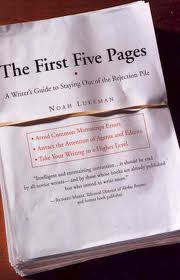 It is important to begin well, to draw the reader into your fictional world. The First Five Pages by Noah Lukeman rightly argues that you only have five pages–at the most–to capture an agent, an editor or a reader. Often, you only have one page. So, beginnings are crucial. They set the stage, introduce character and setting, and most important, Hook the Reader. Lukeman’s book is an excellent guide to getting those pages right.
It is important to begin well, to draw the reader into your fictional world. The First Five Pages by Noah Lukeman rightly argues that you only have five pages–at the most–to capture an agent, an editor or a reader. Often, you only have one page. So, beginnings are crucial. They set the stage, introduce character and setting, and most important, Hook the Reader. Lukeman’s book is an excellent guide to getting those pages right.
Importance of Ending Well
On the other hand, it is also important to end well. The end of a sentence, paragraph, chapter and novel are places of emphasis or stress. Consider the difference between these sentences:
The circus featured elephants and a great trapeze act, all presented in the center ring.
Featured in the center ring of the circus was a trapeze act performed above an elephant act.
In the first sentence the elephant/trapeze acts were buried in the middle of the sentence. Pulling them to the end, emphasizes their importance. Likewise, look at the ends of your chapters. Do you dribble off into nothing, or do these make memorable statements that pull readers to the next chapter? And what are the last lines of your stories? Memorable?
- He loved Big Brother. –George Orwell, 1984 (1949)
- It is a far, far better thing that I do, than I have ever done; it is a far, far better rest that I go to than I have ever known. –Charles Dickens, A Tale of Two Cities (1859)
Read 100 Famous Last Lines from American Book Review (pdf)
Read my analysis of 100 opening lines here.
Which is more important, the beginning or ending of your novel? Both. Make sure you nail both of these crucial sections (and everything in between).


By: Kathy Temean,
on 3/23/2011
Blog: Writing and Illustrating
( Login to Add to MyJacketFlap)
JacketFlap tags:
How to Revise, Book, Editors, revisions, Scholastic, How to, Cheryl Klein, children writing, Senior Editor, Add a tag
 Cheryl Klein started her editorial career in 2000 when Arthur A Levine at Scholastic hired her. She is still with Arthur today as Senior Editor. Cheryl Klein started her editorial career in 2000 when Arthur A Levine at Scholastic hired her. She is still with Arthur today as Senior Editor.
In January 2005, Cheryl started her well-known blog, followed by creating a web site the following November. Both helped her delevelop an online audience.
Once she started running talks online, people began to ask her about when she was going to write a book. With four years of advice behind her, she started seriously thinking about using the material for a book in spring 2009.
On July 1, 2009, Cheryl posted on KickStarter.com, a Web site devoted to raising funds for creative projects. She figured she would need to raise $2000 to print 500 copies of her book and decided KickStarter would be a good way to see if her online support and following would translate into support for a physical book. She then announced her idea on her blog and on Twitter.
KickStarter was newly launched, and mine was the earliest publishing project. She raised the money in nine days, and by September had raised $3200 and I ended up printing 2000 copies of Second Sight. Two years later she has self-published her book, Second Sight: An Editor’s Talks on Writing, Revising, and Publishing Books for Children and Young Adults.
Second Sight is largely composed of Klein’s presentations at writers’ conferences and other venues, the self-published paperback (released by her own company, Asterisk Books), discusses such topics as devising terrific first lines, writing a strong picture-book manuscript, finding the emotional heart of a story, building characters, and bolstering plot.
Click here to purchase from Amazon You’ll have to order it, since they are out-of-stock right now.
Talk tomorrow,
Kathy
Filed under: Book, children writing, Editors, How to, revisions Tagged: Cheryl Klein, How to Revise, Scholastic, Senior Editor      2 Comments on Editor Cheryl Klein Shares Expertise With Writers, last added: 3/27/2011
2 Comments on Editor Cheryl Klein Shares Expertise With Writers, last added: 3/27/2011
|











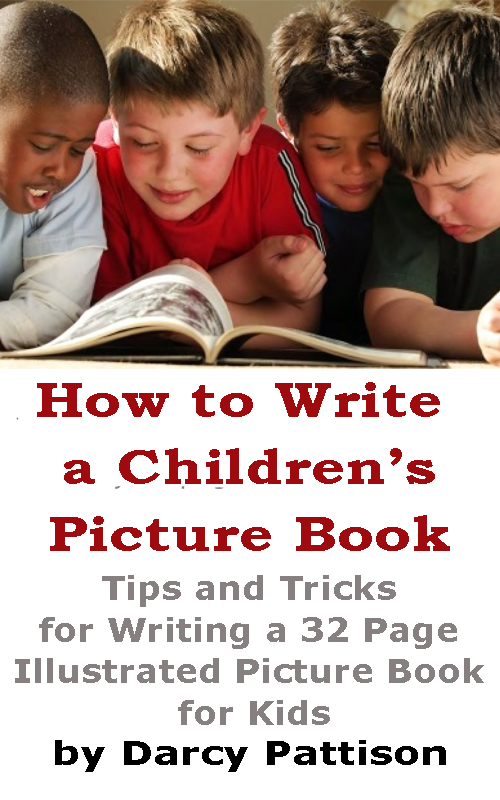


 Cheryl Klein started her editorial career in 2000 when Arthur A Levine at Scholastic hired her. She is still with Arthur today as Senior Editor.
Cheryl Klein started her editorial career in 2000 when Arthur A Levine at Scholastic hired her. She is still with Arthur today as Senior Editor.
Isn’t this the Cheryl Klein who doesn’t know you?
David,
Haha!
Kathy